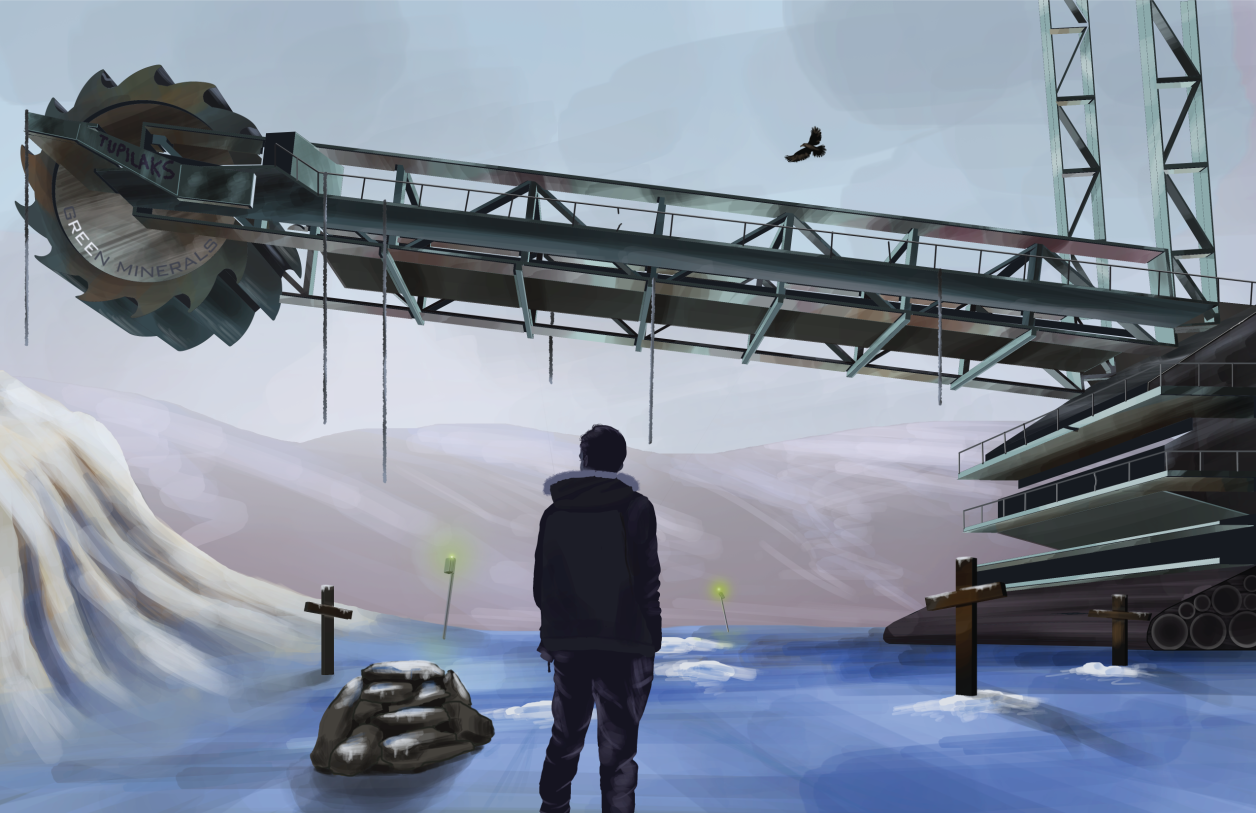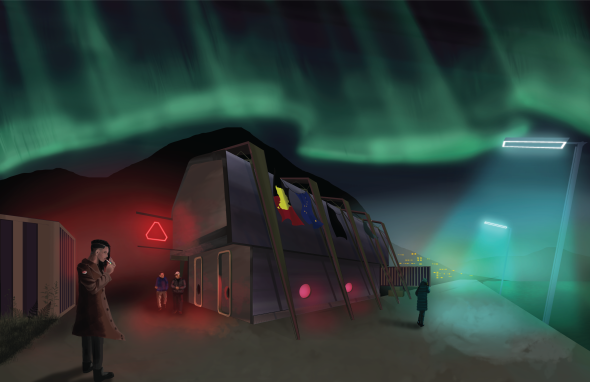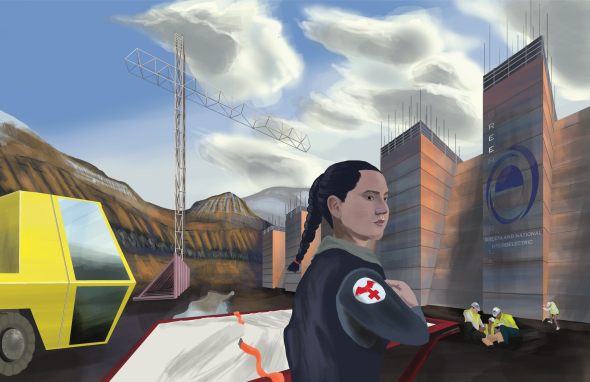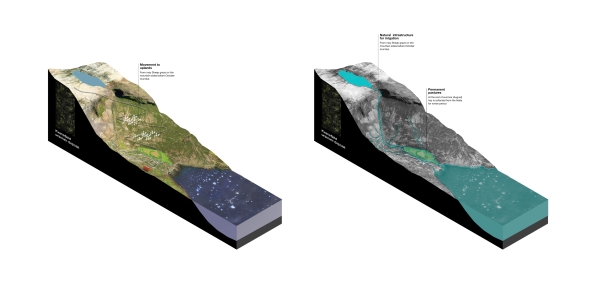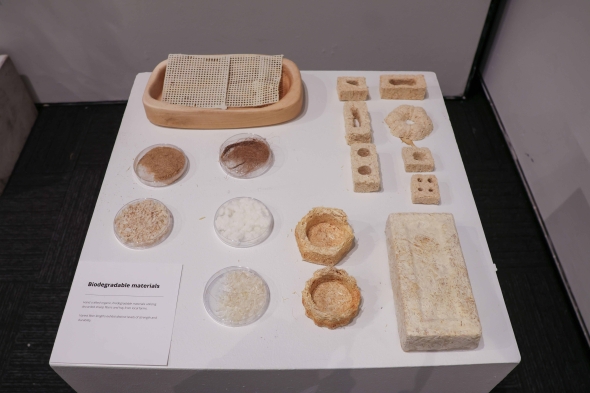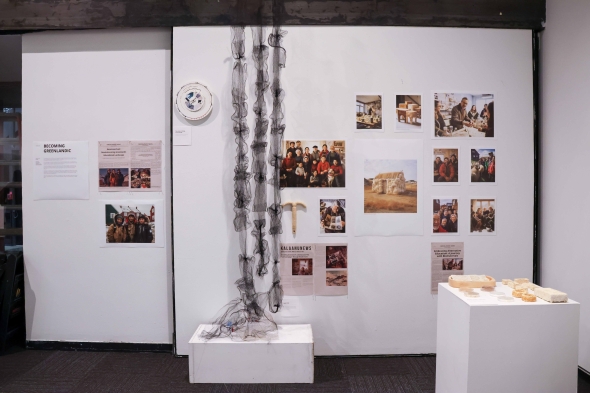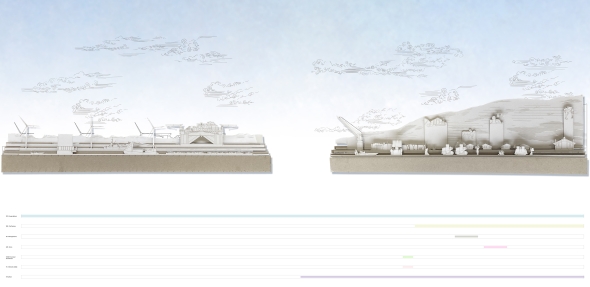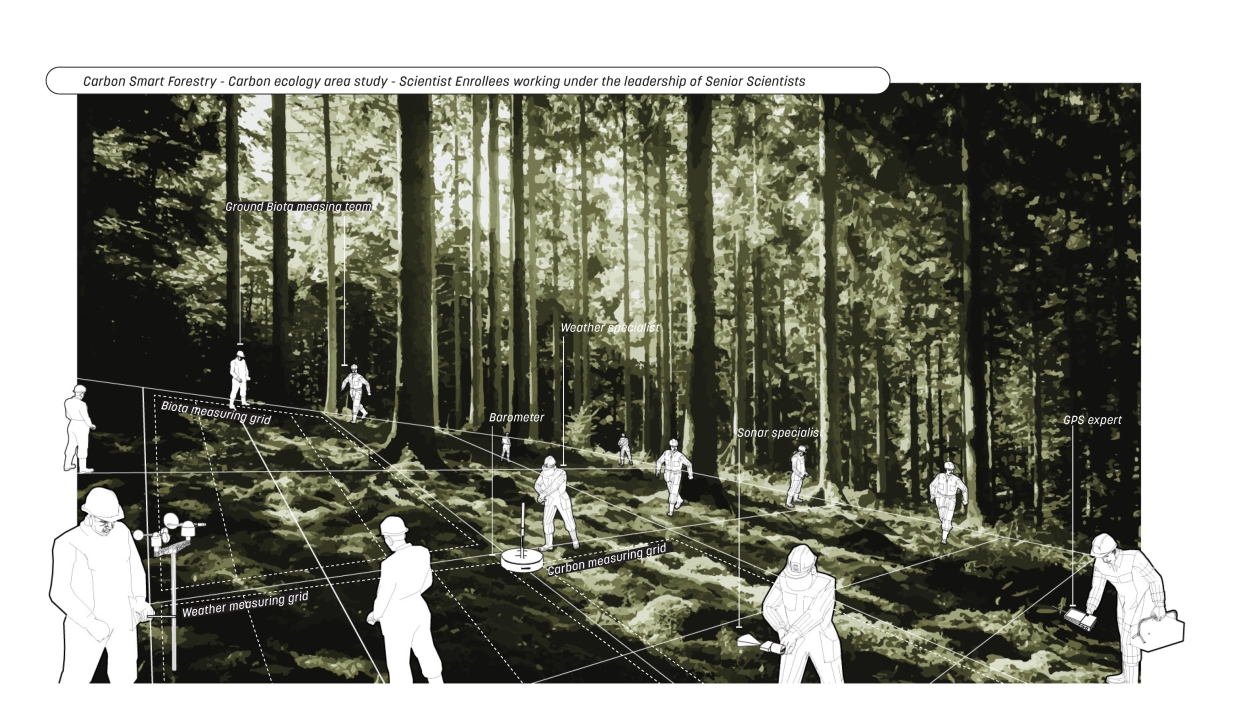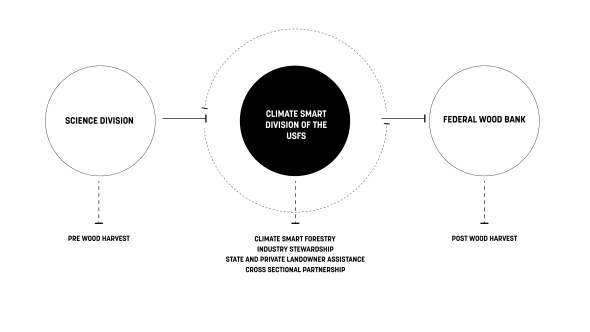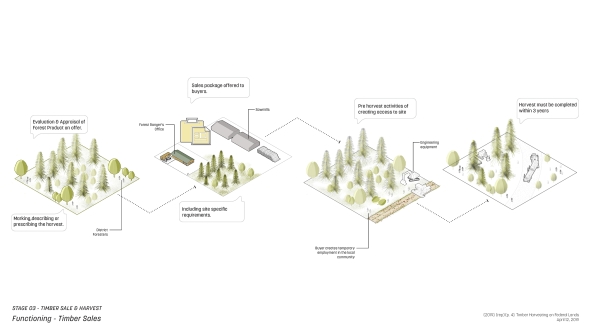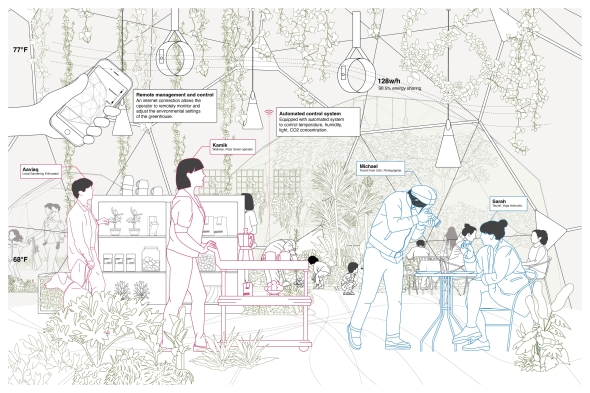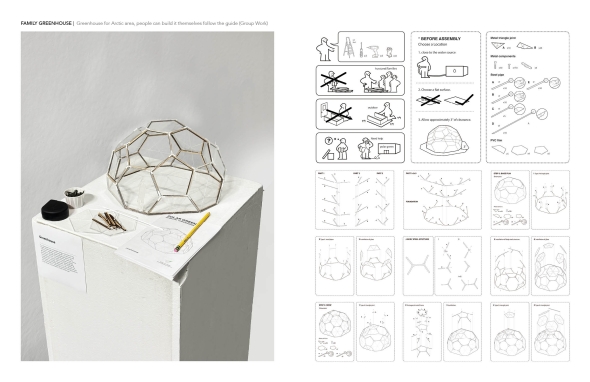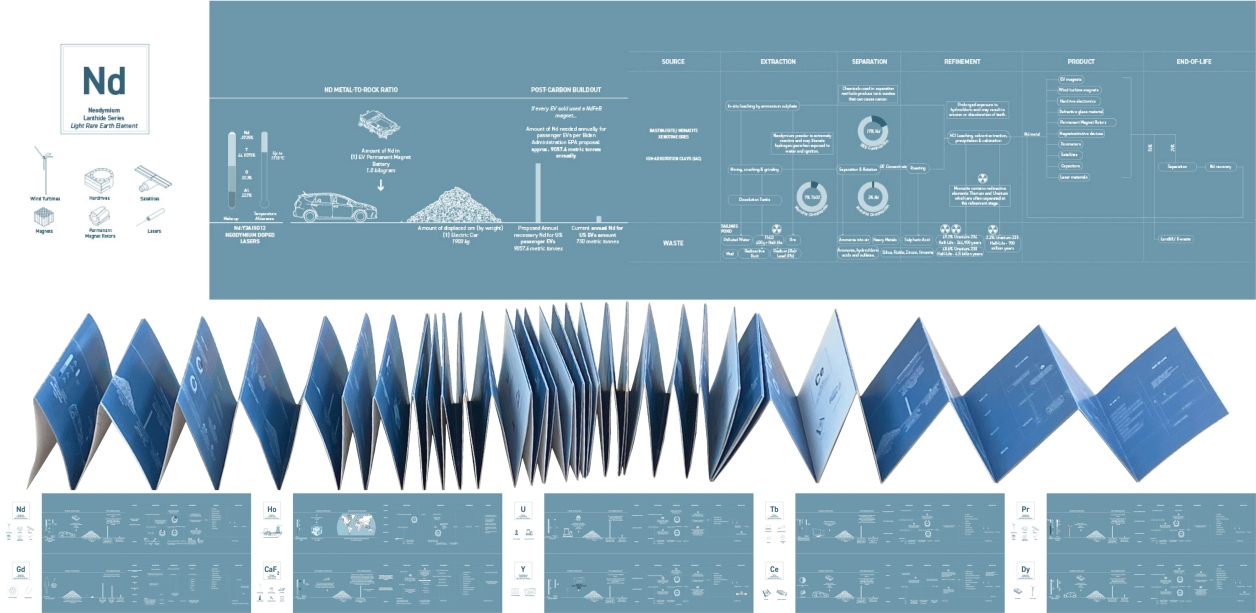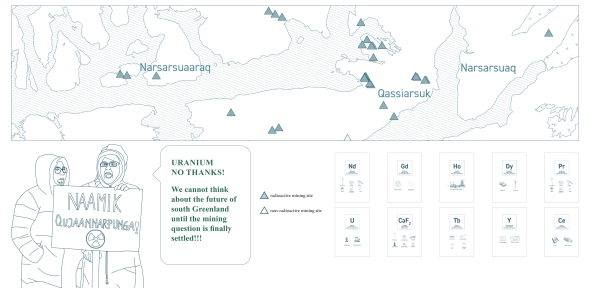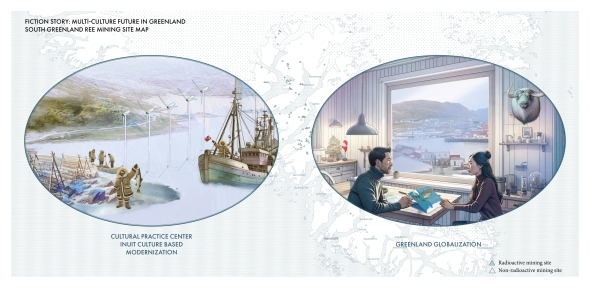Fire, Ice, and Ore: South Greenland and the Global Energy Transition
In some ways, the studio once again picks up where previous efforts left off—back in South Greenland, thinking through its place in the broader, global energy transition unfolding in previous studio sites like Central Appalachia, the Midwest, and the Mississippi Delta. One key to a just transition is building a more robust understanding of how thresholds of waste come to be defined, articulated, and regulated both at these sites and between them. This entails seeing industrial processes like mining, manufacturing, deployment, and post-consumer discard as part of a singular interrelated matrix. Through this lens, mining in Greenland is connected in a variety of nonlinear ways to semiconductor fabrication in Taiwan, to Amazon Data Center buildout in Northern Virginia, to e-waste disposal in Zimbabwe, and so on. Seeing these sites as moving together and bound up in one another is key to unlocking pathways toward a just transition. But the focus is more on Greenlandic futures than previous studios, with a particular emphasis on dealing with the monitoring and cleanup of mining-related radioactive waste; the need for a more robust food system to sustain Greenlanders as climate change transforms the arctic; and the potential for a resource known as "glacial rock flour" to deliver true sovereignty from Denmark for the nation.
The challenge is to make these pernicious forces legible, situating your work in both the realm of the built environment and the broader public imagination, and then developing credible, compelling stories from/for the future, informed by the various movements for justice organizing around each industry in each region. The central aim of this studio is to continue forging new alliances with these movement leaders through the tools at designers and planners’ disposal. So, while students were asked to simply illustrate the often-abstract, non-spatial demands of, say, the climate justice movement, by giving form and aesthetic and spatial dimensions to their work, by landing their ideas in real sites through real projects, and by elucidating the various state instruments (legal, regulatory, financial) imbricated in the fossil fuel, carceral, and agriculture industries of each region, they were also attempting to make their visions for the future seem more pragmatic, more tangible, and more desirable than they might otherwise.


